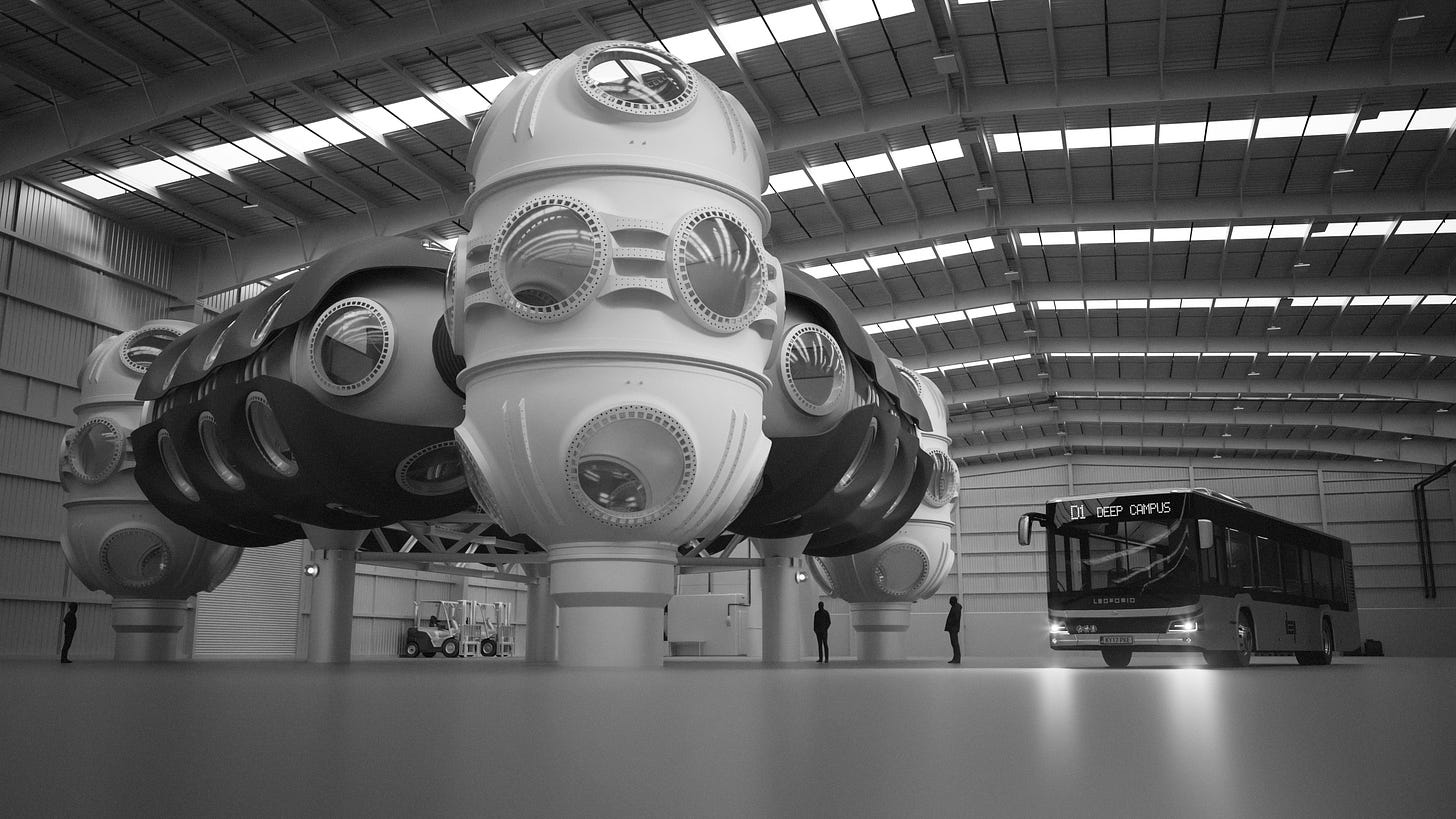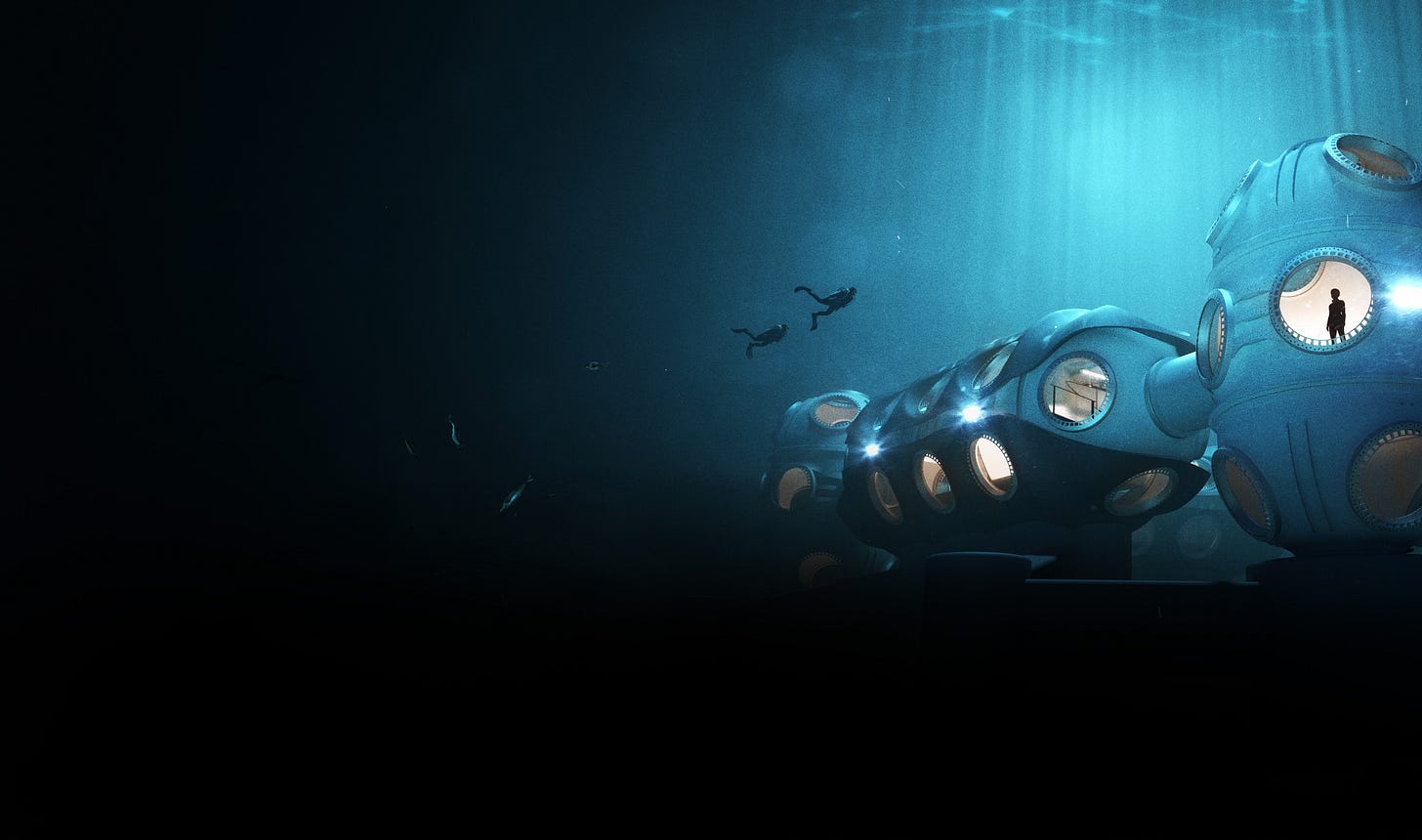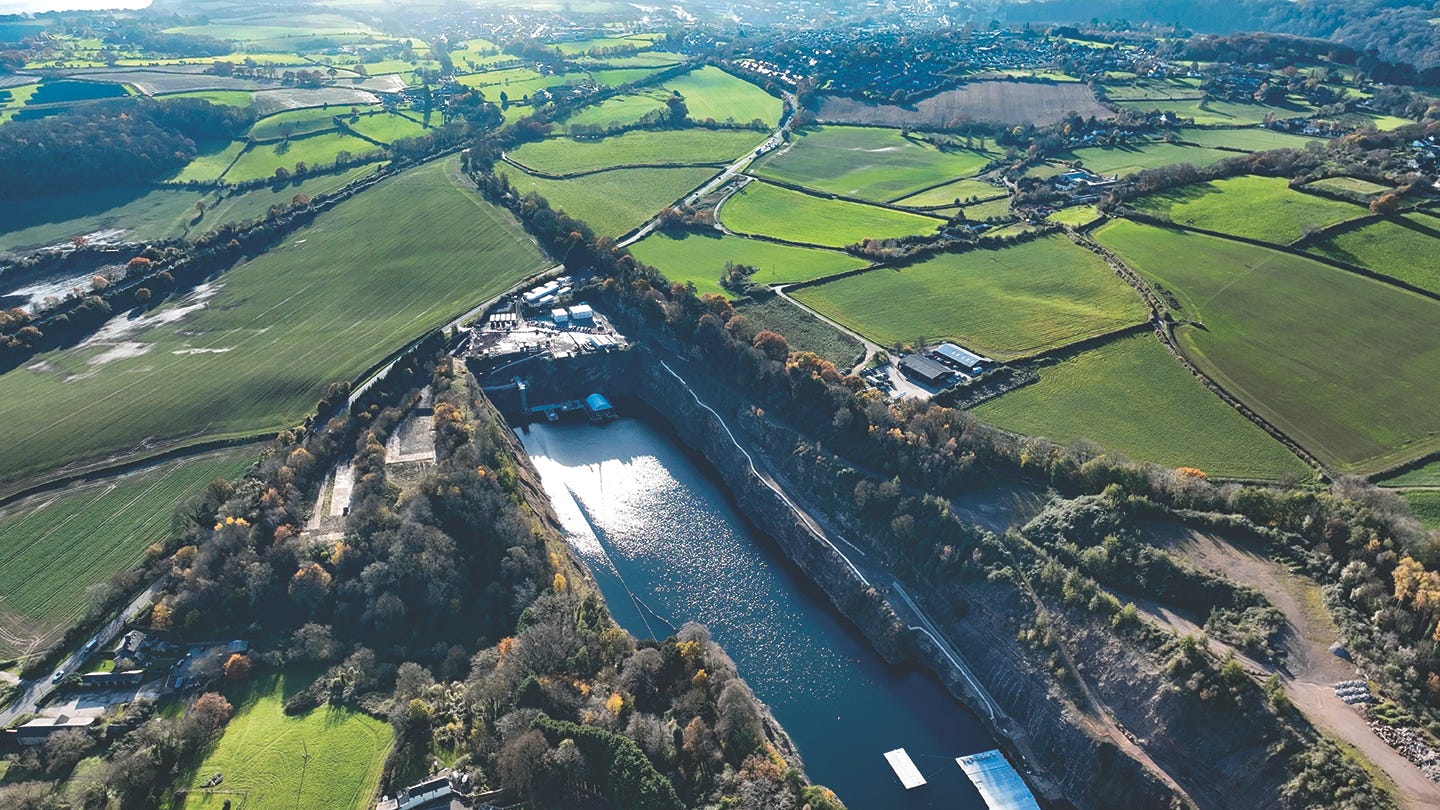Depth and time for the future of underwater exploration
“Right now we are basically trying to be NASA for the underwater world, where NASA makes the rocket ship, the lunar lander and then trains the astronauts, we are trying to do that as well,” Kirk Krack said recently. “And we are on a mission to make humans aquatic by bringing the diving and the marine sciences industry kicking and screaming into the 21st century, whether they want to or not.”
Last week I discussed efforts for researchers to live and work at 100 meters underwater. That’s roughly 330 feet down. There are several groups working on this problem and building solutions. I had the opportunity to interview Krack as he took me through a guided virtual tour of the Deep project. They plan to build a modular system that will operate at ambient pressures, allowing scientists to dive daily at depths without long descent or decompression times. They would only have to do a long ascent when they are done with diving and wish to return to the surface. That decompression time would be roughly the same whether they stayed on the bottom for 6 hours or 6 weeks.
“We have three locations. London is our head office, where Centium Ventures resides. It's a diversified portfolio, asset management company of which Deep is a significant and really the crown jewel of that,” Krack explained.
From there, they have a facility in Bristol where the Deep research labs exist. ”And that's where our engineers are. That's where our advanced manufacturing happens.”
Deep also bought the Chepstow Quarry, formerly known as the National Dive and Activity Center. The quarry itself is 600 meters long, 100 meters wide and 18 meters deep. That’s where they are training their “aquans” and pressure testing habitats.
Krack said since the founding of the company in 2021, they have spent $116 million and 85,000 design hours developing their prototypes.
The Sentinel underwater habitat system is the company’s “north star.” It’s a 21st century modular redeployable reconfigurable system with a lifespan of up to 25 to 30 years. The single span sitting on its foundation system has individual state rooms for six people, it has a dive center with a moon pool, and it's reconfigurable by adding different spans together as the expedition or as the science requires.
“Just to parallel this, in November of 2000, the ISS (International Space Station) went up and had six people in it. And since that time, in the last 23 plus years, we've never had people not living in space in low Earth orbit,” Krack said. “The amount of science that started to spool up from that was absolutely astounding. From conception of the ISS to today $150 billion has been spent on that. In that amount of money and time, we could have had 1,000 habitats around the world with 6,000 researchers over the past 23 years doing real in depth with high fidelity level of science of the oceans.” Deep’s goal is to have its first ocean habitat in the water by November 2027 with a permanent human presence underwater by 2030.
To get ready, they are building a full-size version (made from wood) of the Sentinel that floats on the surface but has a moon pool entrance just the live action version. They will be able to work and study the setup of the underwater station while doing everything from making daily dives to preparing meals.
“You and five of your closest friends in there for 30 days. You to go play Aquaman and learn the systems and dive out of the moon pool pretending you're at 200 meters,” Krack said. “It's a training platform for us. It's a human performance platform.
Krack explained that the idea of the underwater habitats from the 60s through the 80s was to figure out how to live underwater and understanding saturation diving. At that point, the money for research dried up as the oil and gas industry had what they needed.
“Habitats offer you time at depth. They offer you space for labs, and then mission configuration and those are the important parts to us,” he said. “We want a high-performing well-rested crew. We want a diverse group of users, beyond what oil and gas or the Navy, which was typically 20- to 35-year-old males, doing the job,” Krack said.
He also noted that very little research has been conducted on women and saturation diving, let alone age-related research.
The benefits of habitats and saturation diving are a dramatic increase in productive time.
“In 30 days of rebreather dives to 100, 150 meters, gonna take you five minutes to get down there, you're gonna get 10, maybe 15 minutes if you're lucky. And then the next six and a half to maybe even eight hours decompressing,” he explained. “In that 30 days, you're going to get about four hours in field time. And you're going to have an accumulated decompression profile of about nine and a half days total.”
On each of those 30 dives, you have the potential for decompression illness as well.
On the other hand, the saturation diver is living at depth.
“Let's assume you only go out in the morning to dive because you have lunch and then you process labs in the afternoon, over 30 days you will be able to work 240 hours versus four hours. You're going to decompress once, and it's going to be about four and a half to six days. And you're going to do it in the comfort of your state room FaceTiming your family and it's going to be one decompression in a very controlled profile,” Krack explained. “So when you look at the 240 versus four hours, what you have is a force multiplier of about 150 times. In a 30-day mission, scientists could do seven to 12 years of work.
“Take that seven or 12 years of the cost of know, boats and support and gasses versus 30 days of a habitat mission. Habitats become very comparable, but the mission profile and the quality and volume of work that can be done is quite staggering.”
I’m keeping this Substack free for now, but if you’d like to support it anyway, buy me a cup of Kofi.
I also recommend you follow me on my Facebook Author Page, Instagram and Threads.





